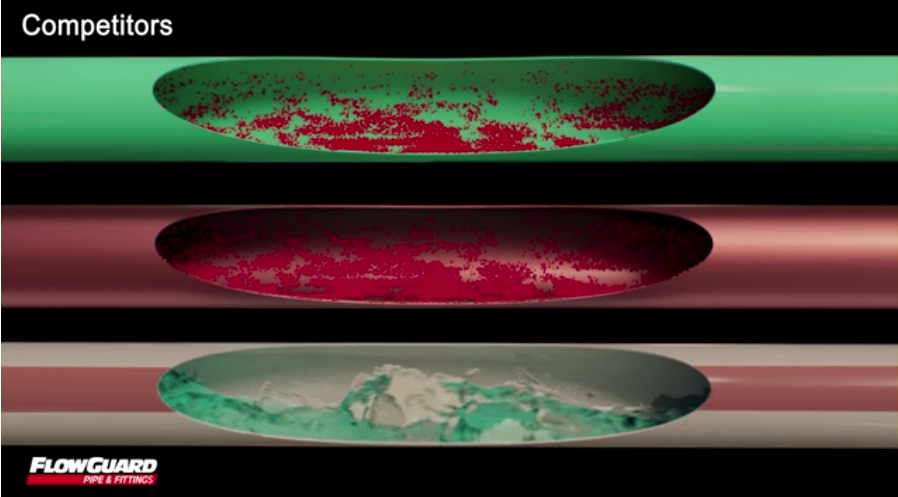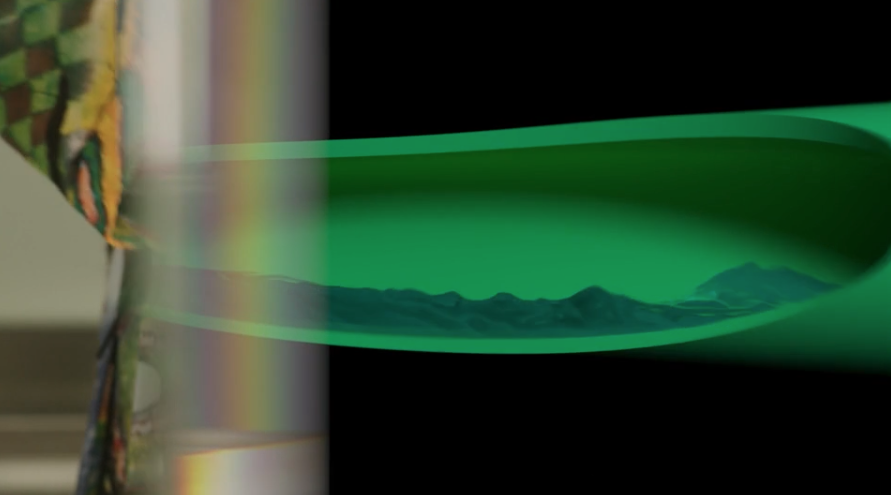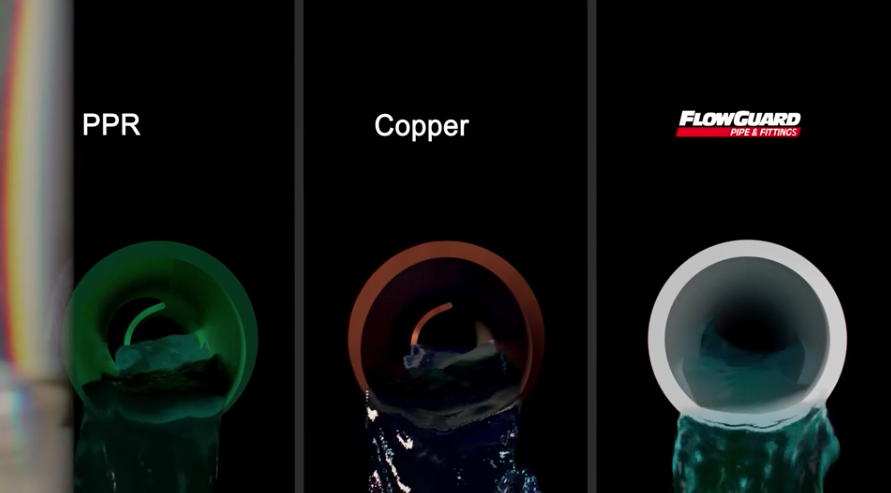Why Should I Upgrade my Home Plumbing System?
Good plumbing is essential to a healthy home life. However, it’s not always clear why.
The piping system that runs its way through the walls, ceilings and floors of your home, delivering water to the rooms and loved ones that need it are, during the majority of their life, invisible. So why do we need reminding of the key qualities that make healthy home plumbing so essential?
FlowGuard CPVC is specifically engineered to deliver clean water to homes for generations. Let’s discuss some of the reasons why it’s worth taking a closer look at your plumbing pipes at home, and why upgrading to a FlowGuard CPVC system has many short and long-term benefits.
To combat bacterial growth

Bacteria are largely invisible to the human eye. When it is hidden away inside your plumbing pipes, it becomes even more invisible and potentially, even more of a threat.
Microbiological bacteria such as legionella and E coli exists inside many plumbing pipes, particularly those that give bacteria a safe environment to thrive, such as PPR or copper.
FlowGuard CPVC has an inherent pipe smoothness in its strong durable chlorinated pipe walls that help to prevent bacteria from sticking to the inside of your pipes, maintaining a clean water supply for longer.
To ensure clean water is doing its job

Chlorine can be the biggest asset to healthy living, but it can also present one of the biggest dangers to your plumbing system.
PPR pipes, for example, are not built to withstand the levels of chlorine and chlorine dioxide in common domestic water supplies. This means that over time, your PPR piping system will erode, causing system failure, requiring costly repairs.
FlowGuard CPVC is engineered with a high level of chlorine and is therefore immune to chlorine corrosion This prevents leaching and system failure, outlasting PPR by decades.
To improve plumbing system performance

The installation of your plumbing system itself will have a guaranteed effect on the flow of water through your home from one location to another.
If you want to maintain quality system performance for longer, you need to think about material; here’s why.
PPR pipe, when installed, forms a natural beading on the inside of the pipe, restricting water flow and providing an uneven surface where bacteria can grow. FlowGuard CPVC is joined at a molecular level using solvent cement, which means all pipes and fittings are fused together to form one seamless water supply line. This means consistent quality (if installed properly) throughout your home, with no weak points.
To prevent future costs
Whichever plumbing material you use, the cost of upgrading an entire home plumbing system is a significant one. Ensure you do not need to meet this cost requirement again.
FlowGuard CPVC’s stability, temperature and pressure resistance and resistance to microbial contamination and scaling greatly reduces the requirement for repairs or system replacement in the future.
Even as your family grows, if extensions or home improvements are made and your plumbing system needs to be extended, cutting and refitting sections of FlowGuard CPVC pipe is quick, easy and cost-effective. You can be sure your plumbing system will grow as you do.
To prevent having to upgrade again
The best thing about upgrading to a quality plumbing system is never having to upgrade your plumbing system ever again!
FlowGuard CPVC is designed for a 50 year service life. In fact, there are CPVC plumbing systems in operation today that were installed 60 years ago, performing fault free and still delivering safe, clean water to its users.
Learn more
To find out more about the health benefits of installing FlowGuard CPVC in the home, the risks of chemical corrosion and microbial contamination in piping and some of the testing methods used to determine CPVC’s suitability for drinking water, download our free e-book, Clean Water At Home.
